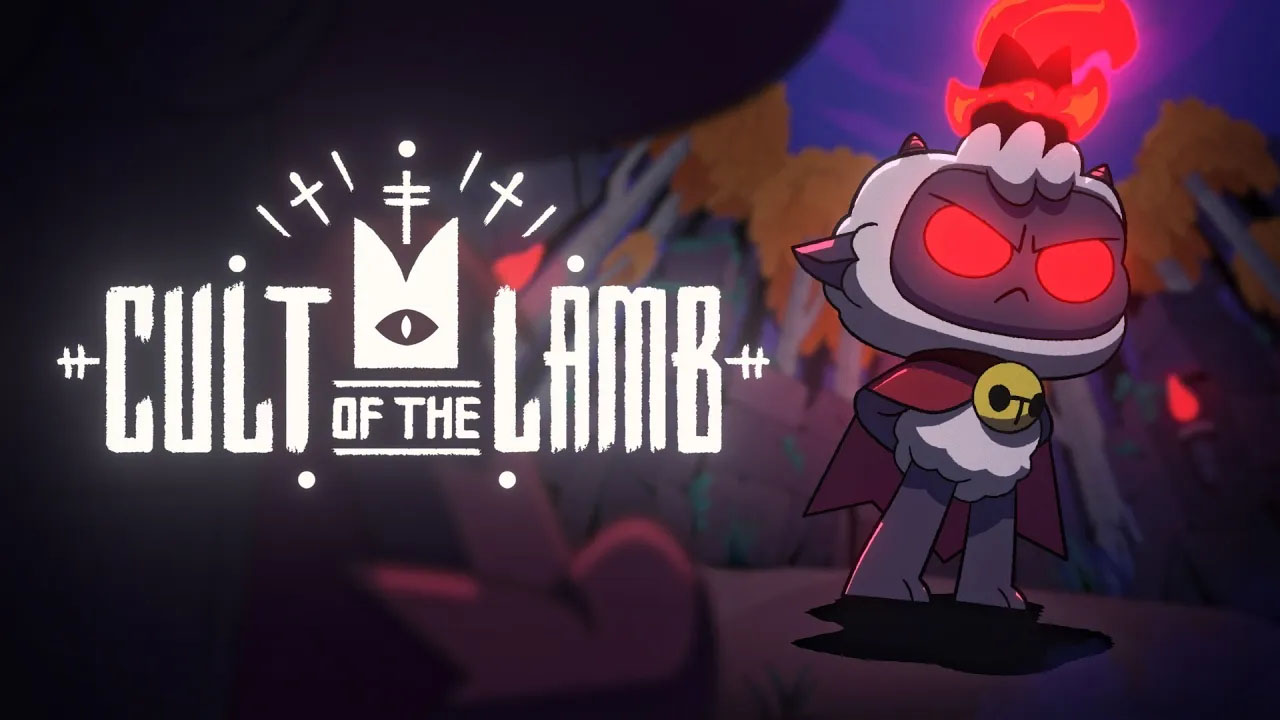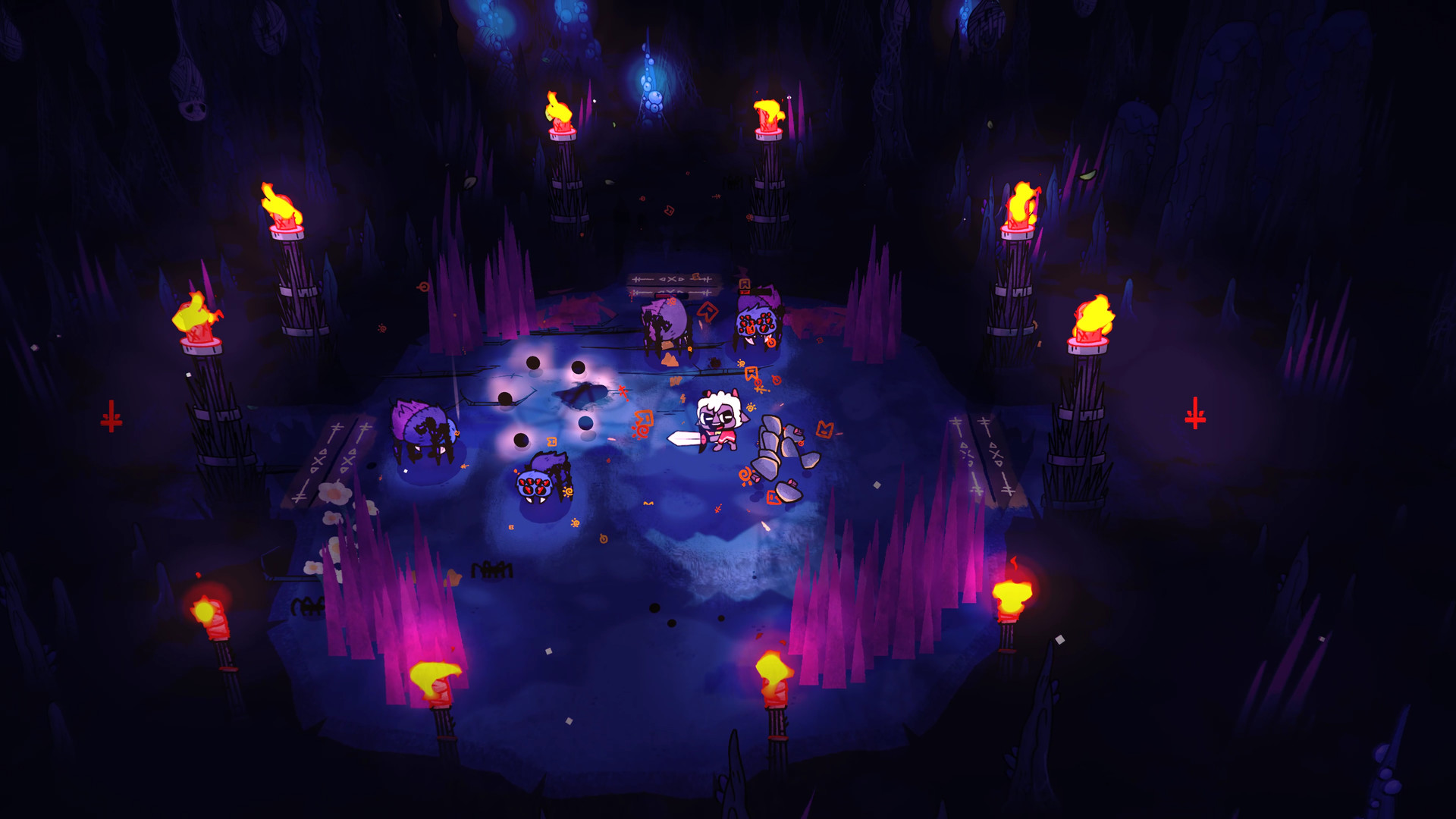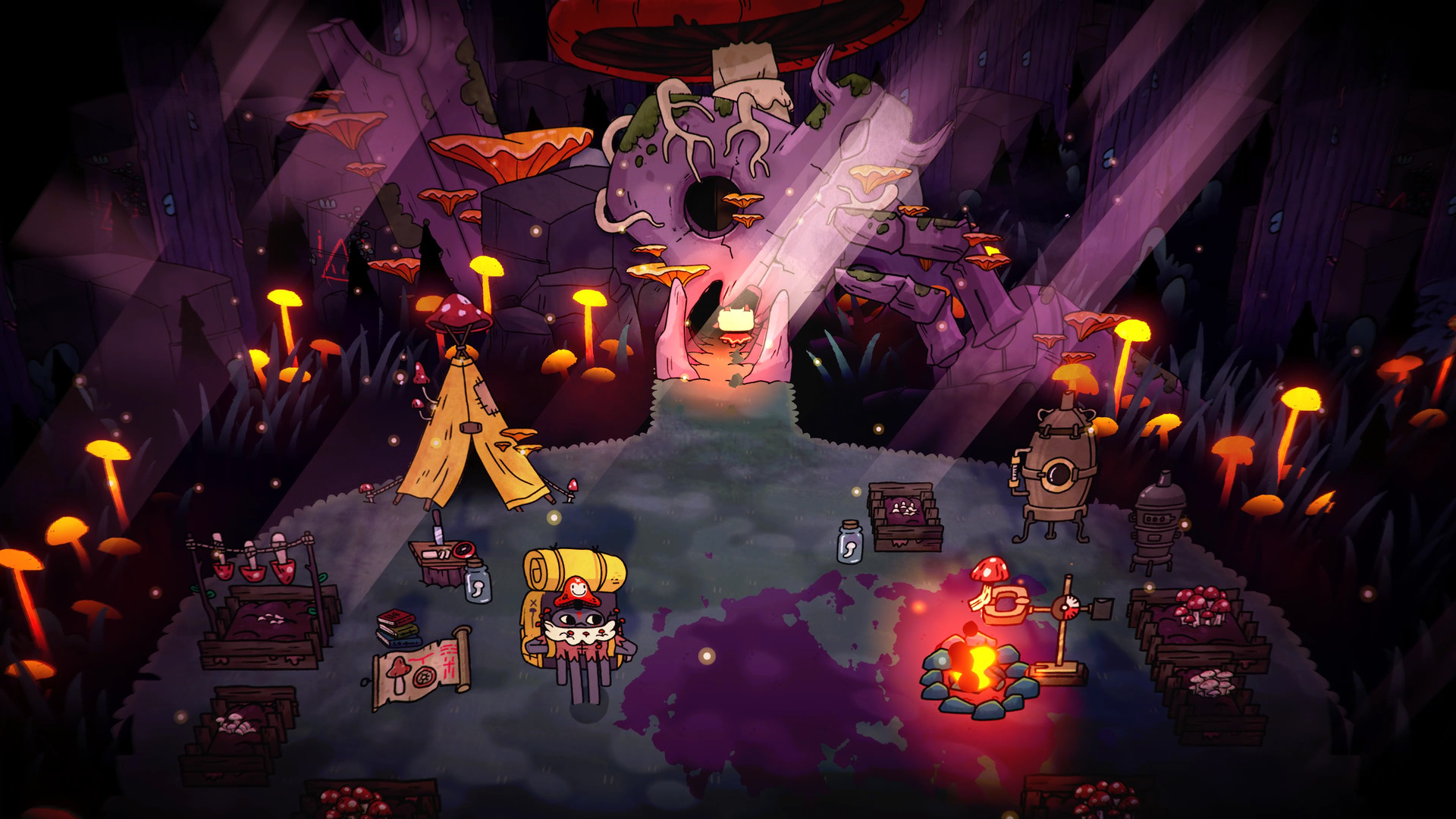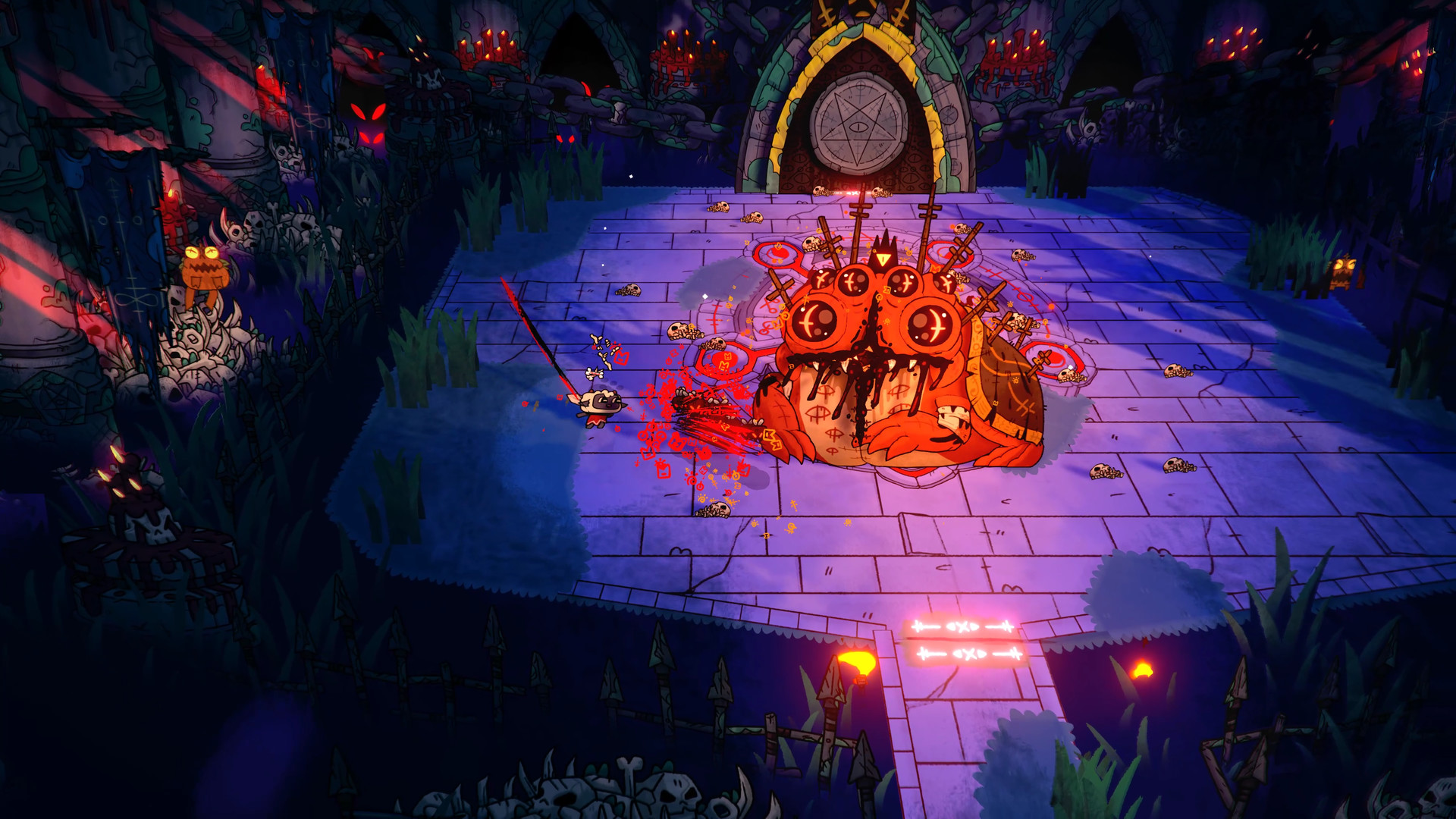
I am someone who tries to go into every new game with an open mind so that I can get the best unfiltered impression that I can, and Cult of the Lamb was no different.
Cult of the Lamb is clearly a game that has been influenced by the aesthetic and styles of popular indie titles that came before it.
Some of the influences seen include games like as Binding of Isaac or Super Meat Boy, while carrying over a gameplay philosophy of Darkest Dungeon and Binding of Isaac as well.
All of these flavors blend together, where Cult of the Lamb is a simple but fun town building, cult crafting adventure that has something for almost everyone.

Now my preview of the game was only an hour long. By the time I put my controller down, I beat everything up to and including the first major boss so that I would get a good understanding of a lot of the games’ basic mechanics.
I wanted to learn how to run or expand my cult, what to build and how to build it. These were the details I wanted to master before I get my hands on the full build in August.
I also had the opportunity to play around with the combat and the stage exploration. The dungeon map layout feels like Darkest Dungeon while the actual rooms of the dungeon carry that Binding of Isaac feel.
The combat in Cult of the Lamb feels fluid and fast paced. Nothing felt complex, which is perfect because it did not need to be.

You have melee attacks with the weapon that has been given to you at the beginning of the dungeon, a rolling dodge with invincibility frames, and the ability to cast magic spells.
That is all that I had during my time with the Cult of the Lamb and it allowed me to make short work of the enemies in front of me. To help further my character’s growth, I also found tarot cards whilst exploring the dungeon.
At one point, I had four tarot cards attached to my character which granted me buffs such as: increased damage, extra health bars, more mana dropped upon enemy deaths, and faster attack speed.
The goal of Cult of the Lamb is to, obviously, build up your cult of a God who is currently held in chains by a series of other Gods. To build up your cult, you must free victims who were about to be sacrificed and indoctrinate them into your cult.

From there, you can assign them to tasks such as gathering materials, tending to gardens, or praying to effigies of your God to build up more holy powers for you.
As your Cult expands, you will be given the ability to make doctrines and decrees to improve your stats and abilities while in combat as well as unlock new tools and options while back in town.
As far as towns are concerned, I was able to meet with three of the game’s outside NPCs during my time with it, and each was more colorful than the last. You will need to become familiar with the NPCs and members of your cult to ensure your success.
You can take on requests from your followers to help build up their happiness and loyalty to you and your cause. The more loyal they are, the more willing they are to help expand your cult.

As I said, I only got to play an hour of the game, so there’s a lot more that I have not been able to experience, but what I did experience is a game that was fun. Cult of the Lamb is a fun, fluid, fast-paced, simple, but not dumbed down game.
It has been a while since I played an indie title like Cult of the Lamb that already felt well-polished. But, that is what I should have expected from a game published by a seasoned company like Devolver Digital.
Cult of the Lamb is set to launch on August 11th across Windows PC (via Steam), Xbox One, Xbox Series X|S, Nintendo Switch, PlayStation 4, and PlayStation 5.